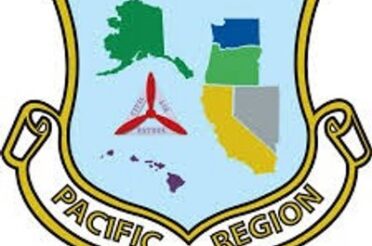- Published March 26, 2024
- By Staff Sgt. Adam R. Shanks
- Secretary of the Air Force Public Affairs
ARLINGTON, Va. (AFNS) —
On Feb. 6, five Marines aboard a CH-53E Super Stallion helicopter belonging to the U.S. Marine Corps’ 3rd Marine Aircraft Wing were reported “overdue” while en route to San Diego, sparking a search and rescue mission for the missing service members.
The search efforts included members of Civil Air Patrol, who along with firefighters and other state, federal and local agencies located the aircraft the next day. Unfortunately, all five Marines on board were confirmed deceased.
“The night of the crash, we were alerted to the missing aircraft and spun up resources to find it,” said Lt. Col. Steven DeFord, incident commander for CAP’s California Wing. “Due to the bad weather in the area, we activated two aircraft from Arizona and got a ground search team to begin a search.”

DeFord explained members of CAP’s National Radar Analysis Team quickly found a radar track for the missing helicopter and gave the teams a helpful last-known position, which was roughly 300 feet away from the actual crash site. CAP began sharing the data with search parties within 30 minutes.
NRAT’s mission is to “shorten the crash to rescue time” by using advanced technologies and data sources developed by the experienced team. Once this team is activated, analysis and actionable data can be provided to others in minutes.
“With our analysis team’s 15 years of experience, and our team-built tools, we’ve become very skilled at analyzing radar data to determine where a probable crash site is located,” said Lt. Col. John C. Henderson, NRAT vice commander.
During the search, 35 CAP volunteers from across Nevada, Arizona and California collaborated to find the aircraft. The Air Force Rescue Coordination Center, located at Tyndall Air Force Base, Florida, was responsible for alerting local CAP agencies, allowing the Air Force to mediate between the other state and federal agencies on scene.
“We had two liaison officers interfacing with the numerous other agencies to coordinate our response,” DeFord added. “CAP provided radar forensics and ground electronic search capabilities, while other agencies provided mobility support and a location for a joint incident command post.”

Founded in 1941 and established as the official civilian auxiliary of the U.S. Air Force seven years later, Civil Air Patrol is chartered by Congress as a nonprofit organization for the purposes of youth development, aerospace education, and to promote general aviation. In an auxiliary role as a Total Force partner of the Air Force, CAP operates the world’s largest fleet of single-engine aircraft for search and rescue, disaster relief, training, and education. The all-volunteer force is made up of more than 66,000 members nationally.
The California Wing engages in multiple exercises weekly, aiding mission partners such as the U.S. Coast Guard by flying multiple aircraft throughout the state to ensure direction-finding coverage to support their lifesaving missions. Additionally, its volunteers stand by to support in-state and federal search and rescue missions looking for emergency location transmitters and missing persons.
No matter the outcome, CAP and its volunteers work alongside the Air Force to provide trained search and rescue professionals and crash data analytics to quickly respond to any event to which they’re called.




